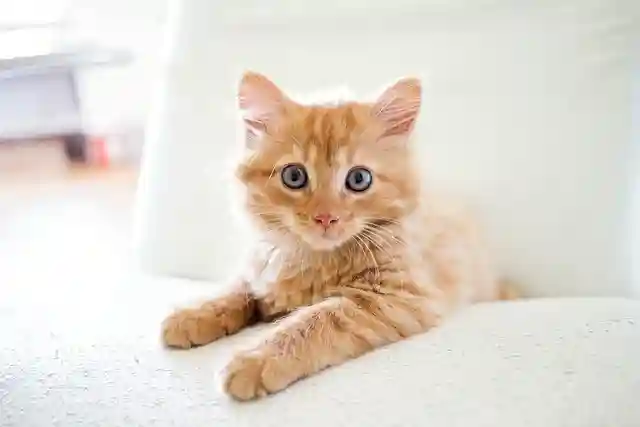Feline Lower Urinary Tract Disease (FLUTD) is a group of conditions that affect the bladder and urethra of cats. These conditions can cause pain, difficulty, and blood in urination, as well as urinating outside the litter box. FLUTD can have different causes, such as urinary stones, infections, or stress. FLUTD can affect any cat, but some factors may increase the risk, such as being overweight, indoors only, or eating a dry diet.
Signs of FLUTD
Some of the common signs of FLUTD are:
- Straining to urinate
- Urinating small amounts
- Frequent and/or prolonged attempts to urinate
- Crying out while urinating
- Excessive licking of the genital area
- Urinating outside the litter box
- Blood in the urine
Some cats may also show behavioral changes, such as aggression or irritation. If your cat shows any of these signs, you should take them to a veterinarian as soon as possible.
Causes of FLUTD

FLUTD can have different causes, depending on the specific condition. Some of the possible causes are:
- Urolithiasis: This is the formation of urinary stones in the bladder and/or urethra. These are collections of minerals that can block or irritate the urinary tract. The most common types of stones are calcium oxalate and struvite. Some stones can be dissolved with a special diet, while others may need surgery to remove them.
- Urinary tract infection: This is an infection caused by bacteria or other microorganisms in the bladder and/or urethra. This can cause inflammation and bleeding in the urinary tract. Cats with diabetes, kidney disease, or weakened immune systems may be more prone to infections.
- Feline idiopathic cystitis: This is a condition where the cause is unknown, but it involves inflammation and irritation of the bladder wall. This may be related to stress, environmental factors, or abnormal nerve function in the bladder. This is the most common cause of FLUTD.
- Bladder cancer: This is a rare but serious condition where abnormal cells grow in the bladder wall. This can cause bleeding, pain, and blockage in the urinary tract. The most common type of bladder cancer in cats is transitional cell carcinoma.
Diagnosis of FLUTD
To diagnose FLUTD, your veterinarian will do a physical examination and ask you about your cat’s history and symptoms. They will also run some tests on your cat’s urine, such as:
- Urinalysis: This is a test that checks the pH, concentration, and presence of crystals, blood, inflammation, and infection in the urine.
- Urine culture: This is a test that grows bacteria from the urine sample to identify the type and sensitivity of antibiotics.
- X-rays or ultrasounds: These are imaging tests that can show the presence and size of stones or tumors in the bladder and urethra.
Depending on the results, your veterinarian may also do some blood tests or other urine tests to rule out other diseases or complications.
Treatment of FLUTD

The treatment of FLUTD depends on the underlying cause and severity of the condition. Some of the possible treatments are:
- Antibiotics: These are drugs that kill bacteria and treat infections. Your veterinarian will prescribe the appropriate type and dose of antibiotics for your cat based on the urine culture results.
- Pain relief: These are drugs that reduce pain and inflammation in the urinary tract. Your veterinarian may prescribe anti-inflammatory drugs or opioids for your cat, depending on their condition.
- Diet change: This is a change in your cat’s food to prevent or dissolve stones, reduce inflammation, or increase water intake. Your veterinarian will recommend the best diet for your cat based on their condition and stone type.
- Surgery: This is a procedure that removes stones or tumors from the bladder or urethra. Your veterinarian will perform surgery if your cat has large or stubborn stones that cannot be dissolved by diet or medication, or if they have bladder cancer.
- Stress management: This is a way to reduce stress and anxiety in your cat that may trigger or worsen FLUTD. You can help your cat by providing a clean and comfortable environment, multiple litter boxes, fresh water sources, toys, and enrichment activities, and avoiding sudden changes or conflicts.
Prevention of FLUTD
You can help prevent FLUTD in your cat by following some tips:
- Provide plenty of fresh water for your cat to drink. You can use fountains, bowls, or faucets to encourage water intake.
- Feed your cat a high-quality, balanced, and moist diet. Avoid feeding your cat dry food only, as this can increase the risk of stone formation and dehydration.
- Keep your cat’s litter box clean and accessible. Scoop the litter daily and change it regularly. Provide enough litter boxes for the number of cats in your household, and place them in quiet and convenient locations.
- Monitor your cat’s urination habits. Watch for any changes in the frequency, amount, color, or location of urination. If you notice any signs of FLUTD, take your cat to a veterinarian as soon as possible.
- Reduce stress and boredom in your cat. Provide your cat with a safe and stimulating environment, with toys, scratching posts, hiding places, and windows to look out. Spend time with your cat and play with them daily. Avoid any sudden changes or conflicts that may upset your cat.
Conclusion
FLUTD is a common and complex condition that can affect the bladder and urethra of cats. It can have different causes and symptoms, but it can be diagnosed and treated by a veterinarian. You can help prevent FLUTD in your cat by providing them with a healthy and happy lifestyle. If you have any questions or concerns about FLUTD, you should consult your veterinarian for advice.
I hope this article was helpful to you. Thank you for connecting with me!
Sources, References, and Learn More:
1. avma.org 2. icatcare.org 3. healthtopics.vetmed.ucdavis.edu 4. amcny.org 5. vetwest.com.au





Leave a Comment
You must be logged in to post a comment.